Free-Trade Cars: Why a U.S.–Europe Free-Trade Agreement Is a Good Idea
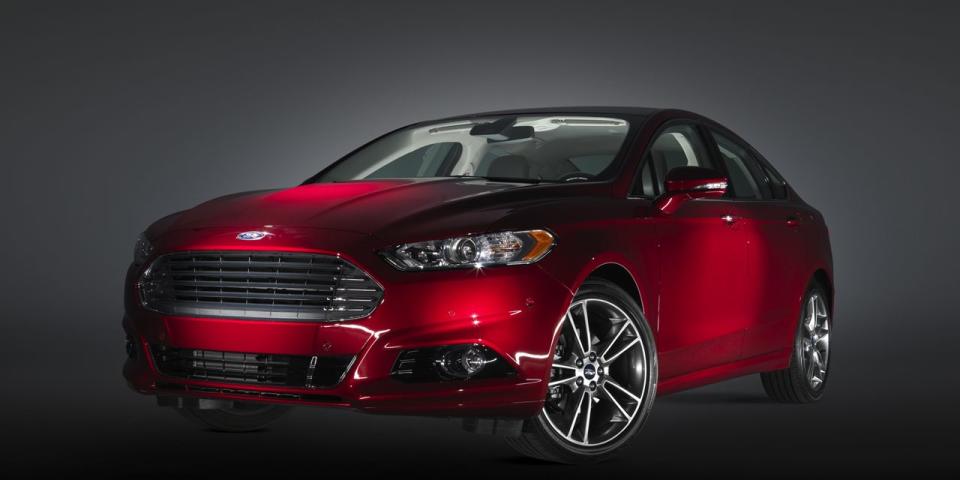
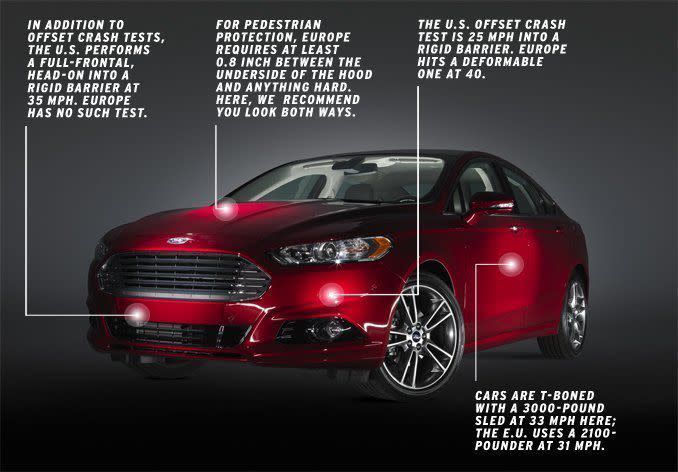
From the August 2013 Issue of Car and Driver
Without launching into a Ben Stein–like dissertation on economics, we find it important to note that President Obama’s March announcement of the proposed Transatlantic Trade and Investment Partnership (TTIP) is hugely important to the car industry and to car enthusiasts. The Partnership’s aims include abolishing tariffs on imported cars, as well as finally aligning U.S. and European automotive safety and environmental standards. If adopted, the agreement could result in increased manufacturing here by European brands and American dealers stocking a broader product lineup. It may even bring back brands that have been exiled from these shores for decades.
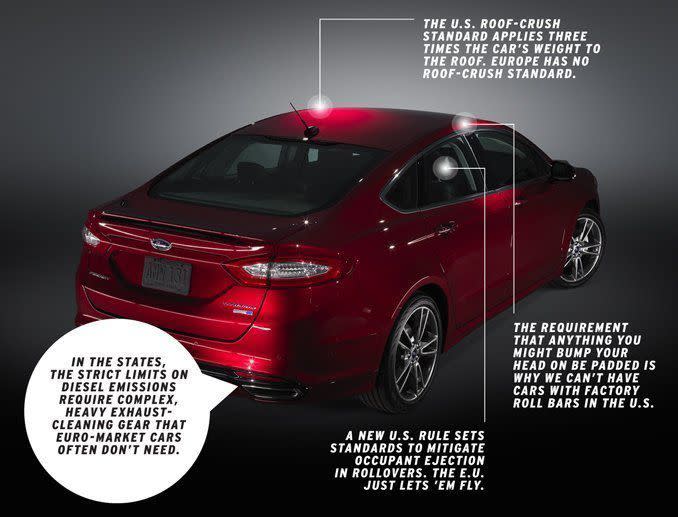

cheaper cars, dirt-cheaper trucks
The standard tariff for importing cars to the U.S. is 2.5 percent of their value. For pickup trucks and commercial vans, the tariff is a whopping 25 percent. Individual European countries don’t charge import duties, but the European Union charges a flat rate of 10 percent on imported automobiles. In simple terms, tariffs are taxes. They’re paid to governments by the businesses that import and export products and are factored into the prices we pay. Virtually every country in the world charges tariffs to some degree. With the proposed TTIP in place, the tariffs on cars and about a billion other products exchanged across the Atlantic would almost definitely disappear.
A 2.5-percent price reduction on a $40,000 luxury sedan equals $1000—not exactly market-changing savings. But it could, according to planners for German car companies, cut prices enough that it becomes economically feasible to expand the engine, transmission, and trim configurations we see in the U.S. Dropping the 25-percent tariff on trucks, though, is the real heavy. Potentially, it could reanimate the cadaverous compact-pickup segment and open the door to imported trucks like the VW Amarok and global Ford Ranger. Doug Scott, the head of marketing for Ford’s truck division, puts it succinctly: “With the [current] tax, importing a compact pickup is a nonstarter.”

revitalizing manufacturing
'merica
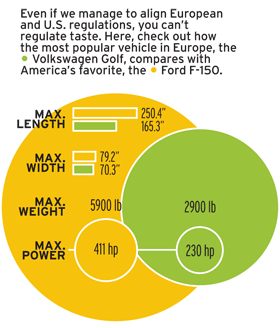
Suffice it to say, automakers are eager to see the TTIP enacted. The American Automotive Policy Council, which represents Chrysler, Ford, and GM, issued a statement supporting the negotiations, calling for an “ambitious agreement” to eliminate tariffs. Unlike NAFTA, the 1994 free-trade agreement that resulted in a rush of factory relocations to Mexico, the European-U.S. deal could very well establish the United States as a major exporter.
Compared with the euro, our dollar remains relatively weak, and that makes our labor cheaper. European companies already benefit from this, building SUVs in Alabama and South Carolina to avoid the 25-percent truck tax and then shipping them abroad. But the likes of BMW, Mercedes-Benz, and Volkswagen are eyeing even more factories here if it means they can build in the U.S. and ship cars back to Europe without incurring a 10-percent import duty. Speaking to the New York Times, BMW’s CEO Norbert Reithofer said he was a “big advocate of a free-trade agreement” between Europe and the U.S.
A senior Volkswagen executive tells us that when Silao, Mexico, recently won out over the U.S. as the site of a new engine factory, “it wasn’t because of the cheaper labor. It’s [Mexico’s] free-trade agreement with the E.U.”
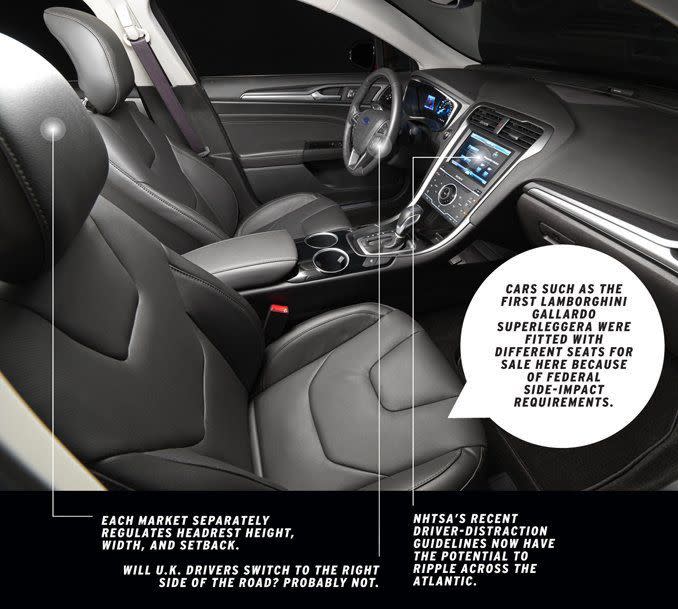

aligning regulations
AMERICAN VISA
DENIED
AND REVOKED

A free-trade agreement will not, on its own, be the magic Ginsu that slices cost out of cars or expands dealership offerings. In the words of Robert Zoellick, former head of the World Bank, “Regulatory issues are way more important” than tariffs. In the automotive world, that means safety and environmental rules. The U.S. crash-tests our cars according to guidelines from NHTSA. Europe follows the European New Car Assessment Programme (NCAP). Our vehicles must meet the EPA’s emissions rules plus California’s stricter standards. European-market cars must be Euro 5 compliant. Each set of tests has different protocols, methods, and priorities. Designing a single car to satisfy two separate sets of standards is an immense, expensive challenge for automakers. From different turn-signal tints to additional unibody welds, it adds time and money to vehicle development.
Efforts to unify American and European new-car regulations have been ongoing for decades. Virtually no progress has been made during the past 20 years in spite of—or perhaps owing to—an entire United Nations office devoted to the subject. Summing it up for German news magazine Der Spiegel, Zoellick said: “A lot of the regulatory authorities are sensitive to their prerogatives. They think, ‘We are doing it the right way, and why should we change?’ ” But with economists, trade analysts, and automakers, through their respective lobby groups, all pushing hand-in-hand to harmonize regulations, the bureaucracy could finally yield.
Although automakers generally try to build vehicles that can satisfy crash-testing requirements on both continents, they often wind up needing market-specific engineering. As the standard bearer for the One Ford philosophy, the new Fusion/Mondeo should be virtually identical in any part of the world, right? So how similar, mechanically, are American, European, and Chinese Fusions and Mondeos? Ninety-nine percent? Ninety-eight? Actually, Ford says the Fusion’s global parts commonality is 80 percent, and that is higher than the industry norm. Many of the variances are parts that customers will never see, such as different thicknesses and shapes of high-strength steel used in the Fusion’s crash structure.

similar emissions
Emissions standards are one of the few areas where Continental and American regulations have seen some convergence in the past few years. Europe has been more tolerant of diesel engines and their oxides of nitrogen. However, in the next generation of regulations, both markets will tighten up everything, creating the perfect opportunity to fully align the standards.

playing chicken
In 1962, the European Economic Community drastically raised tariffs on imported chickens. The U.S. effectively lost access to the European poultry market and, in late 1963, President Lyndon Johnson retaliated with stiff tariffs on brandy and refined starches and a 25-percent import duty on light trucks. Although SUVs were exempted in 1989, the chicken tax is still with us.
think locally
Import — Vehicles are classified as imports based only on where they're built. Mercedes pays no import tariffs for M-classes produced in Alabama, but GM was stuck with a bill for the 2011 Buick Regals sold here, which came from an Opel plant in Germany.
You Might Also Like

 Yahoo Autos
Yahoo Autos 